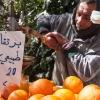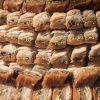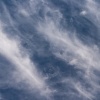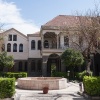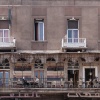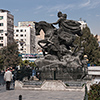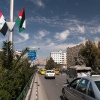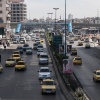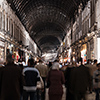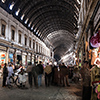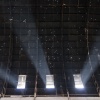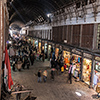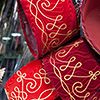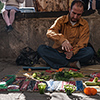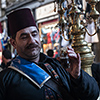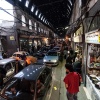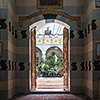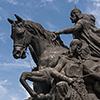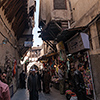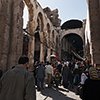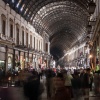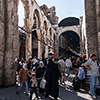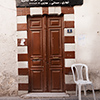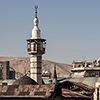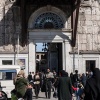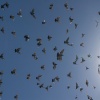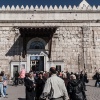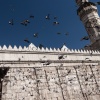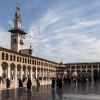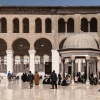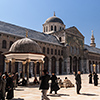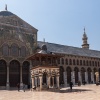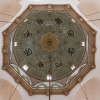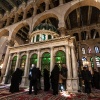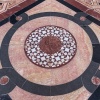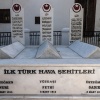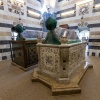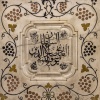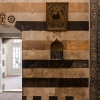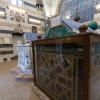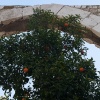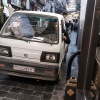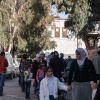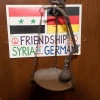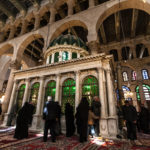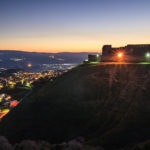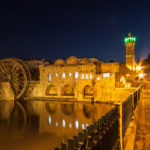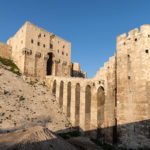More eternal than Rome – Damascus
Already since Bronze Age earth-dwellers settled at the large oasis that is today known as Syrian capital. Already pharaohs like Thutmosis and Amenophis knew Damascus, one of the most continuously inhabited settlements on this planet. Not only the ancient Egyptians had the knowledge where Dimasq is as also two of the most important books worldwide, Bible and Quran, tell stories mentioning Aram-Damascus. Not only UNESCO knows about the Thousand and one Night vibe that is pretty much alive everywhere in Damascus old town, for example at the magnificent and globally unique Umayyad mosque. Damascus, pure orient!
One of the oldest Cities in the World
American-style skyscrapers, all looking the same and having all the same stores in its ground floors being on the desperate hunt to catch stupid trend victims to buy the usual rubbish being assembled by Asian child’s hands? No for me, I am out :-) I prefer places with an interesting history, places of importance and with character as well as culture. When I landed at 2 o’clock in the night back then I didn’t know yet that my visit to Damascus will become fabulous through and through.
After a short and actually surprisingly chilly night, Damascus lies at an altitude of ~700 metres and it was early March, my first way led automatically me to old town, as if a magnet drew me. The beginning of the city’s largest and most important bazar Souq al-Hamidiyah is only a stone throw away from the large Saladin equestrian statue guarding the western entrance of the Damascus citadel. The bazar tube’s corrugated metal roof is an evidence of young history as its countless little holes are bullet holes and remains of a French attack.
In opposite to Aleppo’s Souq the Damascene main bazar is more unsorted. It might happens that right next to stores offering wedding dresses or the hottest hot pants in Syria a Shawarma stall scents the air. Or the famous Bakdash offers its wonderfully pistachio garnished vanilla ice cream (Dondurma) while becoming shrouded in household chemical odours. However, it’s a magic and archaic place, for example when meeting the tea man, offering you some black tea with mint leaves from the samovar knapsack on his back.
Outside Souq al-Hamidiyah plenty of men are sitting in the small lanes demonstrating the capabilities of the vegetable knifes they want to sell. It must have been tons of cucumbers, carrots and zucchini facing its dead there every day anew. Right next to them blinking twinkling toys get sold, unfortunately also plenty of war-related stuff like a crawling soldier puppet shooting its loud rattling rifle every 20-30cm while next-door yet another cucumber gets sliced into pieces.
Leading through the remaining columns and arches of Roman Jupiter Temple and touching the western gate and wall of the mighty Umayyad Mosque, the tube of Souq al-Hamidiyah is about half a kilometre long. The small square between the bazar’s exit and the mosque’s entrance is home to hundreds of pigeons. In the realm of shades of the Qāitbāy minaret they flock onto people if they only show the merest sign of carrying food. Already throwing only single grain of whatsoever into the air makes the big blue-greyish cloud nosedive.
The Umayyad Mosque is one of the oldest mosques in the world and the first one having a large pillar backed prayer hall. It was built in 705 and involved the remnants of the Christian basilica dedicated to John the Baptist. In fact the mosque’s outer walls, in particular the southern wall, haven‘t an Arabic but a Christian origin. The shrine inside the main prayer hall is a terrific piece of history as it is said that inside the head of John the Baptist is laid out. This person is known to both holy books, the Bible as well as Quran, as John as well as Yahya. The John the Baptist basilica again emerged from another structure as well, that is the former Roman Jupiter Temple whose ancient columns and arch form the eastern end of bazar Souq al-Hamidiyah.
The Umayyad Mosque got restored in 2001. Most impressive is its spacious rectangular inner yard being paved with gleaming polished marble that gets even colourful when wandering through the rear colonnades. Having entered the mosque through the western gate you’ll instantly spot the timber-framed Dome of the Clock standing in the middle of the yard. To the left is the octagon-shaped Dome of the Treasury (Qubbat al-Khazna) and in the distance the pavilion-shaped Dome of the Well. The main prayer hall is covered with oriental carpets into the merest little corner.
Like in any other mosque taking off shoes is mandatory before entering Damascus’ main house of prayer and since inside literally no one wears socks only it smells a little as if the 10th class of a men gymnasium just finished a couple of PE lessons. Please never put shoes nowhere on the ground of the inner mosque as people get very angry. I recommend putting them in a plastic bag that you can take with you instead of losing them in the ocean of footwear next to the entrance. Well, except you fancy a walk back to your hotel through Damascus wearing socks only.
Saladin is omnipresent. You can meet him as larger than life statue guarding the western entrance of the Damascus citadel or even kind of face to face as the great commander lies in a shrine directly beside Umayyad Mosque. The room hosts two sarcophagi, one made of wood, the other made of marble. The first (wooden) coffin keeps the body of Saladin while the latter one is a gift of German Emperor Wilhelm II. It’s a much appreciated piece of common Syrian-German history.
No matter where I go and mention to come from Germany, that is “Almanya”, I receive beaming smiles. The Germans are very welcome all over Syria, of course because of foreign aid but also due to having initiated and driven the construction of the Baghdad Railway, a train connection leading from Istanbul via Aleppo to Baghdad with an extension from Aleppo to Mecca via Medina. “Both, the British as well as the French bastards, treated Saladin’s shrine with contempt and damaged it, but you Germans donate him a new home!” comments Syrian Nour the moment. Generally Saladin is ever-present as he is a symbol of former strength, a symbol how to get rid of foreign occupation. They are visibly proud when talking about Salah ad-Din Yusuf bin Ayyub.
